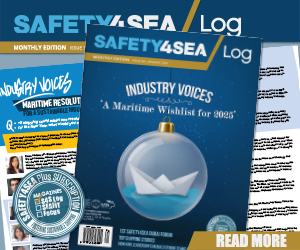The Nautical Institute presents lessons learned from a tragic incident involving the capsizing of an aft tug during a berthing operation.
A small passenger vessel was approaching port after conducting post-refit sea trials and a pilot had embarked for the docking. The plan, as discussed between the Master and the pilot, was to turn the vessel 180 degrees and enter the confined dock area with the assistance of one tug forward and one aft, berthing the vessel starboard side to. The pilot took the con, and slow ahead on both engines was ordered. The Master inquired what speed was required for the aft tug to connect; the pilot responded that they could go up to 7kts and noted that slow ahead had just been ordered.
The passenger ship passed Number 1 Buoy and entered the main navigational channel at a speed of 6 knots. The pilot called the Master of the aft tug on VHF radio, directing them to approach and pass the tug’s bridle to the aft mooring party on the passenger vessel. The pilot remained on the bridge, and the Master went to the starboard bridge wing to watch the tug make its approach. The aft tug matched the passenger vessel’s speed, and the mooring party pulled the towlines on board.
About three minutes later, dead slow ahead on both engines was ordered on the passenger vessel. Shortly afterwards, it was reported that the two lines of the aft tug’s bridle had been made fast on the port and starboard side of the passenger vessel’s poop deck. The forward tug began approaching for their connection. The passenger vessel was now making 4.6kts.
Once the forward tug was connected, the pilot directed ‘After tug minimum dead astern’ on VHF. The aft tug’s Master responded, ‘Do you want me swinging off pilot and go dead astern?’, to which the pilot replied ‘Yeah, dead astern minimum please’. Closed-circuit television images show the aft tug now turning to starboard and peeling away from the passenger vessel’s starboard side then dropping astern.
On the aft tug’s deck, the starboard bridle became taut. The tug’s turn stalled with its heading now approximately 45 degrees to the right of the passenger vessel’s track. The tug was quickly pulled sideways by the bridle and almost immediately heeled to port. It capsized within 10 seconds. Some of the aft mooring party on the passenger vessel threw lifebuoys overboard and looked for survivors, while one crew rushed to the galley for a knife to cut the tug’s bridle.
The rescue efforts notwithstanding, the inverted tug sank within 30 minutes, taking the two crew with it. The victims were later recovered but were deceased.
The investigation found that, considering the speed (4.6kts), the tug had just over 10 seconds to reverse direction into its new position astern of the passenger vessel before its weight came onto the towlines. Instead, the tug’s turn stalled and the bridle came under tension. The tug was using a gob rope, but this did not prevent the tug being towed sideways. The tug’s emergency tow hook release was found to be operating correctly after the accident, but it is hypothesised that the crew did not have enough time to operate it before capsizing.
Lessons learned
- Research shows that the heeling force exerted on a tug is proportional to the square of the towing speed. As such, the heeling moment generated at 4.6kts was more than twice that generated at 3kts and five times that generated at 2kts.
- The passenger vessel’s speed at the time of the manoeuvre exceeded the 2-3kts recommended by both industry and the local port towing guidelines.
- Investigations into similar girting accidents found that it was essential that conventional tugs use a gob rope during towing operations to ensure the safety of the tug. To be fully effective, this rope must be correctly set and secured. A gob rope must be as low in the vessel as possible and as close as possible to the tug’s transom.
- The gob rope in this case was led through a bow shackle 2.8m behind the towing hook, about 0.5m above the deck and over 1m from the tug’s transom. This gob rope arrangement was unlikely to be as effective as one rigged closer to the transom. It is therefore possible that this arrangement left the tug more vulnerable to being towed sideways and girted.
- It is essential for safe operations that the Master, pilot and tug Masters agree and share a common understanding of the planned manoeuvre. In this case there was ambiguity and lack of information amongst the team.
- Cutting the tug bridle may have changed the outcome had it been done before the tug capsized. As it was, a crewmember on the passenger vessel had to run to the galley for a knife.































































